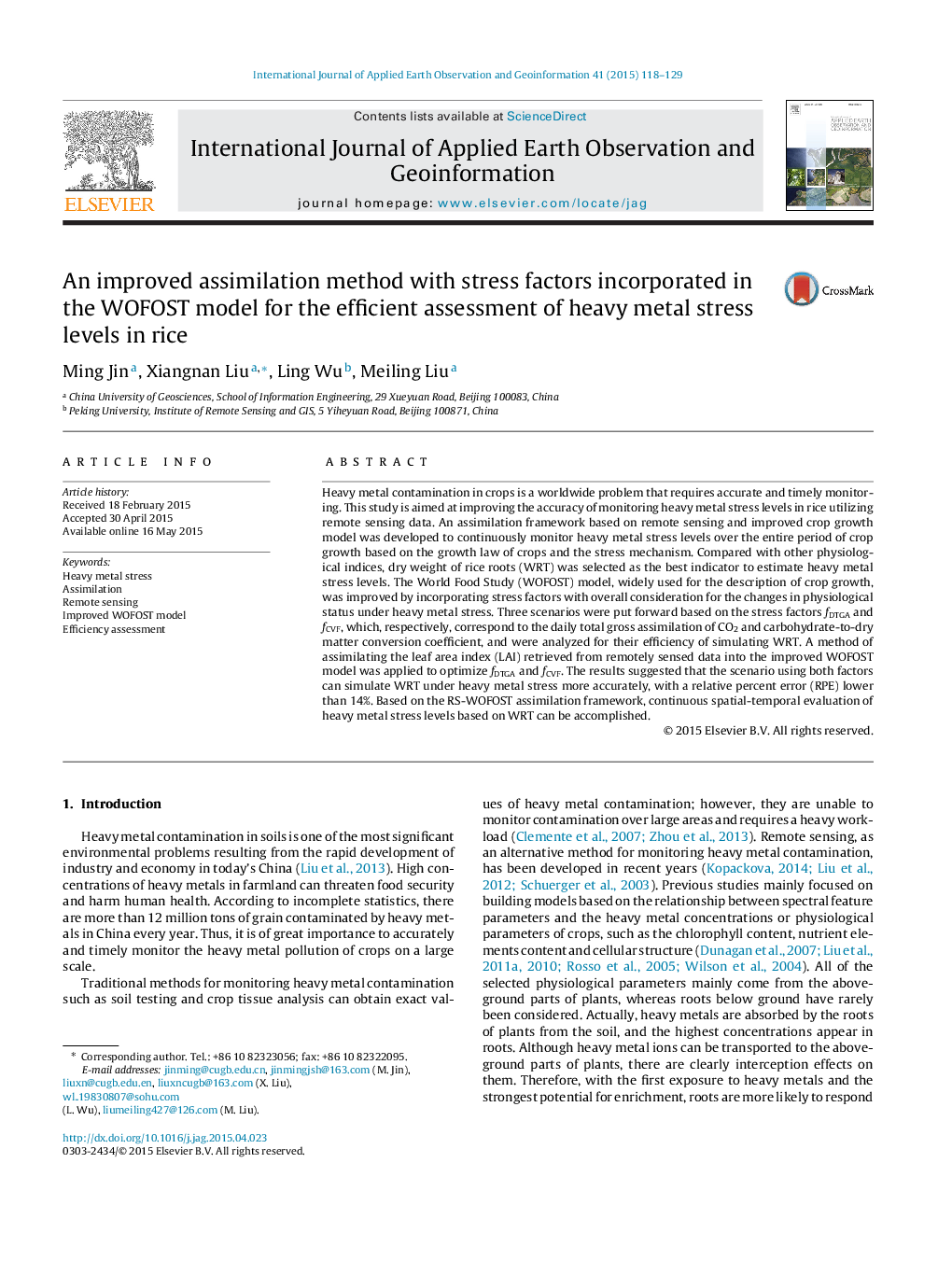| Article ID | Journal | Published Year | Pages | File Type |
|---|---|---|---|---|
| 4464685 | International Journal of Applied Earth Observation and Geoinformation | 2015 | 12 Pages |
•A RS-WOFOST assimilation framework was developed to accurately monitor heavy metal stress levels in rice.•The crop growth model WOFOST was improved by incorporating stress factors in important physiological processes.•Three scenarios based on two stress factors were compared in theory and practice.•Assimilating areas of remotely sensed LAI into improved WOFOST models can enable the continuous spatial-temporal evaluation for heavy metal stress levels.
Heavy metal contamination in crops is a worldwide problem that requires accurate and timely monitoring. This study is aimed at improving the accuracy of monitoring heavy metal stress levels in rice utilizing remote sensing data. An assimilation framework based on remote sensing and improved crop growth model was developed to continuously monitor heavy metal stress levels over the entire period of crop growth based on the growth law of crops and the stress mechanism. Compared with other physiological indices, dry weight of rice roots (WRT) was selected as the best indicator to estimate heavy metal stress levels. The World Food Study (WOFOST) model, widely used for the description of crop growth, was improved by incorporating stress factors with overall consideration for the changes in physiological status under heavy metal stress. Three scenarios were put forward based on the stress factors fDTGA and fCVF, which, respectively, correspond to the daily total gross assimilation of CO2 and carbohydrate-to-dry matter conversion coefficient, and were analyzed for their efficiency of simulating WRT. A method of assimilating the leaf area index (LAI) retrieved from remotely sensed data into the improved WOFOST model was applied to optimize fDTGA and fCVF. The results suggested that the scenario using both factors can simulate WRT under heavy metal stress more accurately, with a relative percent error (RPE) lower than 14%. Based on the RS-WOFOST assimilation framework, continuous spatial-temporal evaluation of heavy metal stress levels based on WRT can be accomplished.
